#ADU home kits
Text
Want an office space on your property? Count on the BOSS ADU home kits :
ADU house kit from BOSS is a versatile and flexible structure that is customizable to meet your design and functional needs. These structures are manufactured from commercially sourced materials that are built for interlocking panels.BOSS also ensures that the panels used are weatherproof and class-1 fire-resistant for safety and comfort. The roofs are designed from 5” steel panels with a snow tolerance of 30lbs/sqft.The ADU kits from BOSS meet the California building codes, are FM-approved, and come with a 3-year manufacturer warranty. Besides, BOSS uses 35% recycled content while constructing the ADU kits, making for a sustainable option. Visit the BOSS website to shop for ADU home kits and design an office space on your property.
0 notes
Photo

Look what Home Depot’s selling. A cool black home to finish yourself.





This is cool.
gothic home decor enthusiasts // https://www.homedepot.com/p/Getaway-Pad-540-sq-ft-1-Bed-and-Roof-Deck-Tiny-Home-Steel-Frame-Building-Kit-ADU-Cabin-Guest-house-GPRD540/320746688#overlay
225 notes
·
View notes
Text
instagram
youtube
youtube
instagram
https://www.homedepot.com/p/Hud-1-EZ-Buildings-24-25-ft-D-x-20-08-ft-W-Wood-Log-Hobby-Workshop-Office-Extra-Space-Storage-Building-arlanzona40/304364607?cm_mmc=PSOC-FB-6350866752950-6352204344350-6352204337150&fbclid=IwAR2IWq0fQSdgTrXcUoD668geJ6uAlWuz5856nc-LS2DOnM163_PhnioM6tc_aem_AZlUquVNzJwf00rEEvngCvIw_92ztm6vC5UjR3pvG8e-o5vsv1m-7aBTsp6C5rWpysXcQW8Xa7x9mkaYi2r-HEU6&utm_source=facebook&utm_medium=paid&campaign_id=6352204344350&ad_id=6352204337150
https://www.homedepot.com/p/Rose-Cottage-2-Beds-444-3-sq-ft-Tiny-Small-Home-Steel-Frame-Building-Kit-ADU-Cabin-Guest-House-Outdoor-project-kit-RC2B443/320746690?cm_mmc=PSOC-FB-6350866752950-6352204346150-6352204338150&fbclid=IwAR1JXuajYLukD2pgU9lnYCFe-wnfdGrkE_thhbeOpHAqWY2x7ikU5vVIeW8_aem_AZmKABYxP6JdeqrWCf53Z9KWZvM65E1iYkHozv0mwsQPif4dN7e-d4xVC7ZyZsuWfSDRF-CEbrbopJxpT4UDylYG&utm_source=facebook&utm_medium=paid&campaign_id=6352204346150&ad_id=6352204338150
0 notes
Text
Find ready-to-make tiny home kits for sale only at TinyHouseMe

Irrespective of whether you are looking for custom-tailored kits or ready-made models, TinyHouseMe is a place where you can find everything. It is an online directory where multiple certified tiny home builders showcase their log cabins., ADUs, tiny home kits for sale, and RVs at lucrative offers and discounts. If you have anything specific on your mind, you can tell it to your builder, and they will tailor-make the house for you. The class-leading quality and exceptional craftsmanship of the houses make the builders one of a kind. Get in touch with builders via TinyHouseMe to get priority service and a faster response.
0 notes
Text
2. Naomi E Campbell
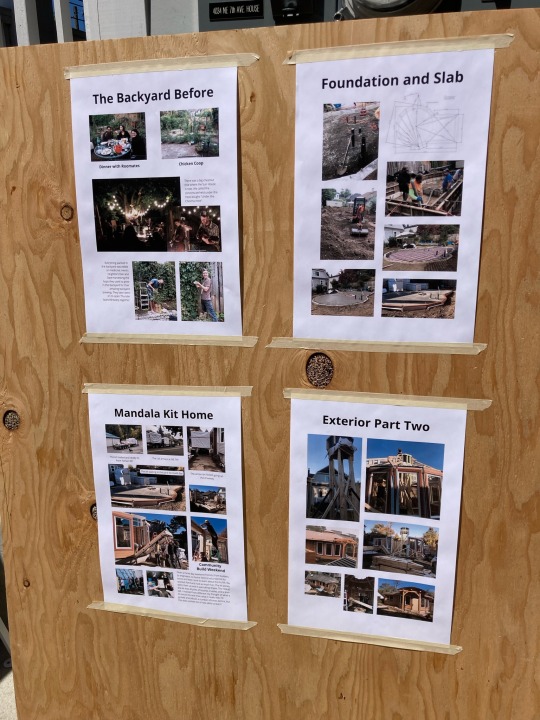


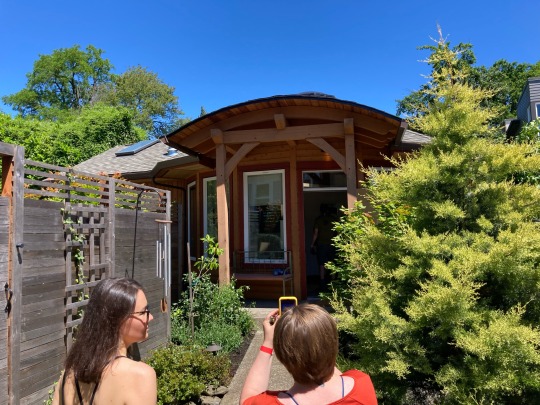




2. Mandala Kit home. DAMN. Best one yet. All the groovy cool of a geodesic yurt without feeling cramped or inefficient inside. Recessed skylight cast lots of indirect light with a tiny hotspot cleverly always on a wall / cabinet. Lots of windows but if quality comparable r value to normal insulated walls. Bathroom probably cheating with glass shower wall - felt bigger than actual & but if you went translucent vs. Opaque or invisible you probably split difference & keep big open feeling without constantly walking into glass wall.
https://accessorydwellings.org/2022-adu-tour-project-profiles/#2
0 notes
Link
Follow my Facebook Page:- Hello everyone, it has been a long time since I posted some of our projects. Here is a few building we sold in California. It feels good helping customers erect their Prefab steel buildings! Visit our site at constructionnetworkservice.com
More Information... Metal Home Kits
1 note
·
View note
Text
youtube
Thanks to new extra-large 3D printers, it’s now possible to print a house with a machine that extrudes a material - usually concrete/cement or a polymer, but more lately even earth - in an entirely additive process so there is exponentially less waste in construction.
Mighty Buildings can print a home in just 24 hours in their Oakland, CA factory using a thermoset polymer composite that is cured with a UV light (on the printer head). The process is fast enough for the material to support its own weight allowing for organic shapes but slow enough that there is cohesion between layers.
The company stayed in stealth mode while working through the regulatory challenges of such a novel technology. “The reality is the building codes are written in blood,” explains Mighty Building’s co-founder Sam Ruben, “and we want to make sure that we're actually getting ahead of that because we don't want 3D printing to get in the codes only when something goes wrong. So that's why we've moved iteratively to make it as easy as possible for building officials to say yes and allow us to begin delivering units while we continue to demonstrate and build out our portfolio.”
To launch 3D printed homes with their iterative approach they began selling units with just a printed curved wall that were sized to be dropped into backyards as ADUs (Accessory Dwelling Units). And now, they have begun selling kit homes so anyone can customize their own printed home. “The idea here is instead of delivering fully finished modules, we actually deliver a flat-pack panel system similar to a Sears Kit Home from the ‘20s and ‘30s, but updated for the 21st century.” Ruben calls it a “SIPS panel on steroids” because unlike a SIPS panel it can be used as an exterior cladding with a finish that acts as an air, water, vapor, and fire barrier.
Mighty Buildings hasn’t tried to print everything and, instead, they are taking cues from the shipbuilding industry by buying prefab sections (like bathrooms) so they can plug and play to quickly finish units on a larger scale.
They also hope others will be interested in collaborating and setting up their own Mighty factories to print more locally and rapidly. It’s another reason they’ve worked with the largest standards-making bodies to help develop their new regulations for 3D printed construction. “We helped develop the world’s first standard for 3D printed construction (UL 3401) which has been used as a basis for appendix AW in the 2021 international residential code update that means that jurisdictions that use the IRC can plug it into their local codes”.
*On faircompanies: https://faircompanies.com/videos/they...
Mighty Buildings website: https://mightybuildings.com/
#Kirsten Dirksen#solarpunk#3d printing#house#Mighty Buildings#Oakland#California#Sam Ruben#3d printed house#Accessory Dwelling Units#kit houses#Youtube#USA
6 notes
·
View notes
Video
youtube
U-Build is a modular construction system even completely inexperienced builders can assemble with simple hand tools. The flat-pack kit is made from CNC-cut plywood; components are slotted together like puzzle pieces using only a mallet and a drill.
By following a simple set of instructions, one or two people can build a home, a backyard studio or ADU, or even furniture. To create a frame, pieces must be assembled to create hollow boxes that stack (and bolt together) to create walls and a roof. Natural-sheep-wool insulation is pre-cut to fit the boxes. On top of a weather-proof membrane, cladding completes the buildings; this can also be pre-fabbed in wood or cork panels.
The idea to create a pre-fab building kit using boxes as the modules began with clients who wanted to self-build a modular house using shipping containers. “But we said to them, 'although it sounds cool you can't really self-build using shipping containers because you'd need a crane license, you'd need a welding license, so while it seems modular, it's really just the illusion of modular.' We said, ‘what you really want is if we could get the modules small enough that you could be building them yourself’. So with some of our contacts in the CNC world, we basically tried to find a way of making repeatable, strong structural boxes which could be like that human modular element."
The kits are designed for easy assembly and disassembly so the pieces can be reused for a new home, cabin, or piece of furniture. U-Build offers plans for tiny houses or cabins (10- 30m2/ 107- 323 sq ft) for £1000 (~$1380) per square meter. There’s a full-size house (40-150 m2) at £900 per m2 and plenty of options for garden sheds under £12,000 ($16,600). The “Barn Owl” looks like it could serve as an ADU - the photo shows a bed, kitchenette, shower, and toilet setup; it requires building 57 boxes.
Nick Newman spent the last week on-site in Sussex where a team built two cabins in seven days atop simple ground screws (instead of a concrete foundation). He walks us through what it takes to build your own home with a screwdriver and mallet (and some shims and silicone to put in the window glass; frames are included in the kit). We also visit a young couple in Somerset who built a cord-clad tiny house on wheels using a U-Build kit. It took them three months with zero building experience.
https://u-build.org/
4 notes
·
View notes
Photo
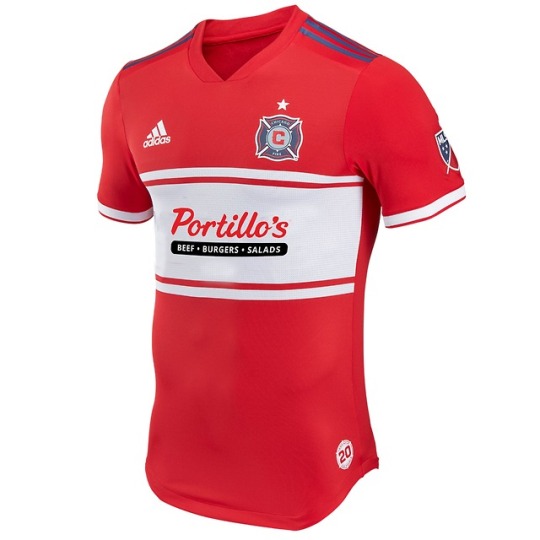




2018 MLS Kit Branding Reimagined
The 2018 Major League Soccer season is nearly underway. It’s been a long offseason and we’re hyped to have it back.
Our friends Tap In have a lot of new, exciting MLS content coming this year on their guide, and in celebration of that, we decided to partner on a fun little project.
In a bid to add a little more personality to what is largely bland, impersonal sponsorship real estate on each kit, we reimagined every team’s jersey with something new in the middle of it. Some of these are local companies, others are prospective partners who have some fun link to the team, and others will probably just be arcane jokes that won’t land.
Nevertheless, we thought this was a fun way to bring a few of our favorite things together: Friendship, Photoshop & American soccer.
Please enjoy.
Atlanta United — Waffle House
An iconic southern restaurant with its roots in Atlanta, Waffle House is open 24/7, 365—and it’s the best. As Waffle House FC will tell you, this is a perfect sponsor for a team that’s tasty on and off the pitch. Their supporters never waver, refusing to shut off for even a single second when they pack the Mercedes-Benz Stadium. They aren’t afraid to do things their own way—which, yes, can sometimes get a bit messy ... but most of the time it’s spot on.

Chicago Fire — Portillo’s
Sorry, it’s important we let you know now that this is probably going to be a food-heavy list as we’re rather fond of eating.
Portillo’s is a Chicago institution known for its hot dogs, Italian beef sandwiches, and an extremely healthy, 100% good for any diet cheese sauce.
While the Fire aren’t yet a Chicago institution themselves, we hope one day pictures of Bob Bradley, Hristo Stoichkov & Ante Razov will line the walls of a Portillo’s near you.

Colorado Rapids — Coors
The beer with mountains on the can that turn from white to blue when it’s cold enough to drink...
The beer that you knew and loved so well from ages 21-24...
The beer brewed with spring water from the very same Rocky range you can spot from the Colorado Rapids’ 18,000-seat soccer specific stadium...
Headquartered in Golden, Colorado and responsible for some of the best nights of your life, we give you Coors on a Rapids jersey...
“Like if Chelsea’s 1994 kit did a gap year in America.”

Columbus Crew — Wendy’s
As the red-headed stepchild of MLS, this one kind of feels right. And the disappearance of the club would be just as sad as when Wendy’s (founded in Columbus) got rid of their spicy chicken nuggets.
#SAVETHECREW
(Note: The actual kit is pretty great and it’s honestly insulting that we did anything to it. We’re sorry.)

DC United — Geico
The Chevy Chase, Maryland-based Geico gecko had some good years there. We all liked him for a while. It was a good bit. But it got stale right around the time Freddy Adu left town. Since then, DC United and the gecko have struggled mightily to find consistent form. Here’s hoping they both find success this year from a new approach.
(And, hey, while we’re here: All the best to you, Freddy.)
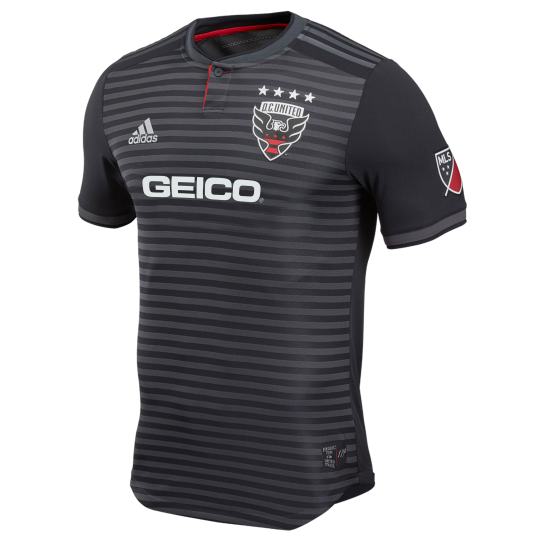
FC Dallas — Dr. Pepper
Everyone’s second team, Dr. Pepper, is a lifestyle in Texas. A Lone Star State-staple that pulls a talented 23-flavor squad from all-over—here’s to you Waco and Dublin— Dr. Pepper is an underrated, over-performing outfit with immense local significance … just like their imagined partner in Dallas.
A lot more to be proud of than their trophy cabinet will tell you.
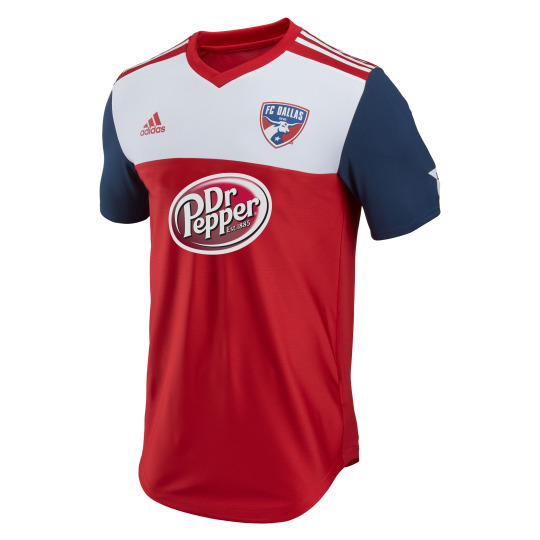
Houston Dynamo — Swishahouse
As Mike Jones, noted soccer superfan, Swishahouse OG, and Everyone’s Favorite Rapper from 2005, once said:
Let ‘em know:
Houston Dynamo.
Good enough for us.

LA Galaxy — SpaceX
Space. Galaxy. You get it.
Headquartered a stone’s throw from the LA Galaxy’s stadium in Carson is SpaceX, Elon Musk’s influential private “outer space things” company as it’s scientifically known.
Much like MLS’s most famous and successful franchise, SpaceX is a trailblazer famous for its glamour and willingness to break the mold. This isn’t to say it’s always smooth sailing—for either—but at the end of the day they’re both respected for their vision and performance.
This crossover is too perfect and it’s something that we’ve seen terrific mockups of in the past (though we wish we knew who to credit!). Also worth a shout is this awesome piece from LA Galaxy Confidential, which mentions Tesla as a fun potential partner.

LAFC — The Boring Company
If the Galaxy is SpaceX, LAFC is The Boring Company.
Elon Musk’s newest endeavor is going to revolutionize Los Angeles by … making tunnels for cars? Oh, and by creating giant vehicles that can travel those tunnels and move lots of people at once … like a train. Hmm. The Boring Company seems like a well-backed but ordinary idea that lacks direction and distinction, with a lot of hype for reasons no one can really explain.
To be blunt, we haven’t really seen much to this point.
The Galaxy have sent a Tesla up into space and revolutionized how we build rockets... but LAFC have so far just made a bunch of flamethrowers and sold out their entire stock. So, we’ll see.
For now, all we’re really sure about is how much better their kit would have looked if they hadn’t put their sponsor in red.
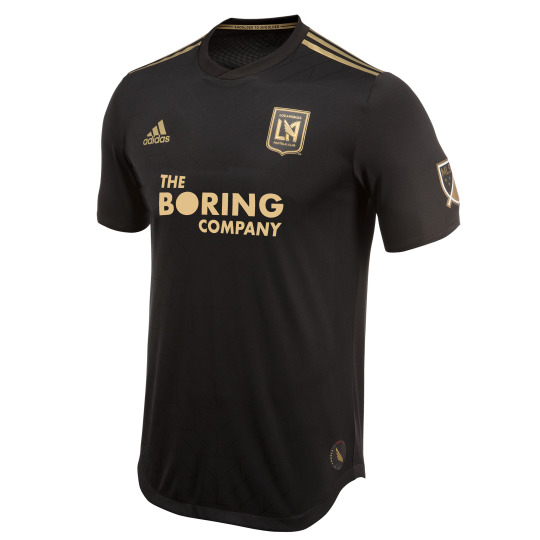
Minnesota United — Prince. Duh.
You can have a Dirty Mind or even be a little Delirious, but you’ll still end up right back here with no Controversy. You can wear it in a Little Red Corvette, in a Purple Rain, When Doves Cry or even put it on Bambi. With this kit, you’ll be a Sexy MF.
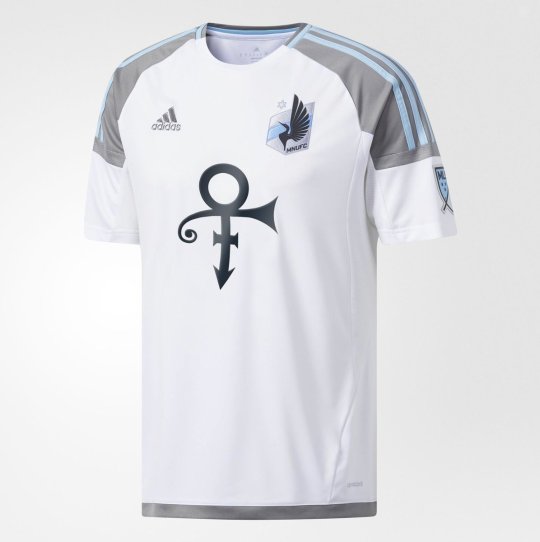
Montreal Impact — Cirque du Soleil
What’s wilder than benching Didier Drogba because you’re better without him? One person doing acrobatics on the head of another person while a third person flies through the air holding fire. In French.
Born and headquartered in Quebec, Cirque du Soleil is now the largest theatrical producer in the world. The Impact aren’t even the kings of Canada yet, let alone MLS, but this could be the year they flip their way to the top. Holding fire. In French.

New England Revolution — Sperry’s
Put those Sperry’s on to look the part and take your dad’s boat out on the water. You’ll be as close to Boston as Gillette Stadium and the deck of your boat will probably be as soft as the turf too.

NYCFC — Sbarro.
The Michael-Scott-approved best pizza in New York. The only logical choice.

Sorry, sorry. We’re kidding. Don’t go to Sbarro.
...Let’s try that again...
NYCFC — WeWork.
Much like City Football Group, WeWork is trying to change a model.
For CFG, it’s football clubs. For WeWork, it’s the office space game. WeWork started in New York, born out of an inability to find affordable and available office space in the city—a problem NYCFC knows rather well—and now has an operation that spans across the globe.
Like CFG, it might not be your cup of tea, but it certainly works for a lot of people in NYC and has offered plenty of enterprising young professionals a place to grind. #JackHarrison
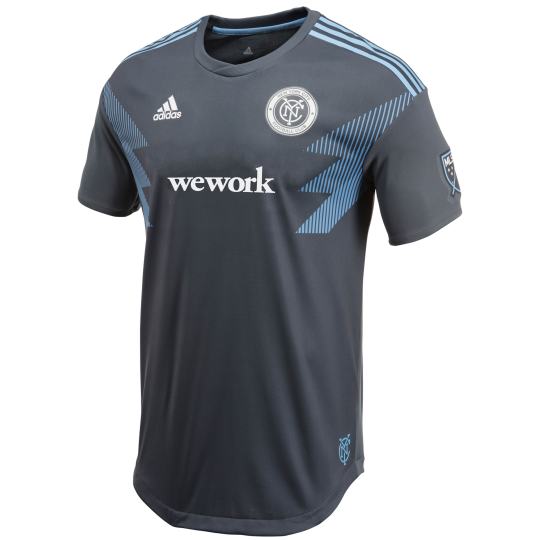
New York Red Bulls — Become the MetroStars again.
#Metros4Ever. That is all.
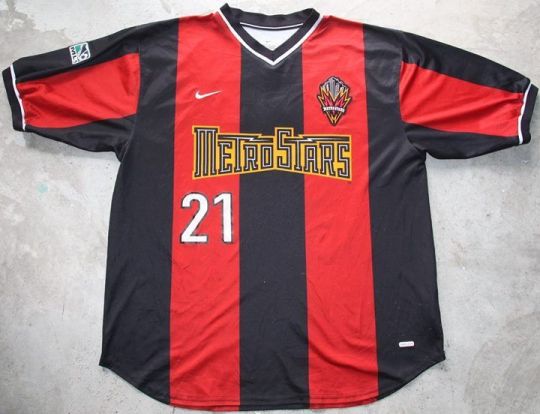
Orlando City — Publix
This one is a no-brainer.
Publix is an employee-owned supermarket chain that serves up some truly delicious food and has fans almost as fanatical as those found on The Wall in Orlando.
Floridians are vocally, passionately, sometimes a bit frighteningly #TeamPublix—and the same can be true for the way purple-clad City supporters get behind their squad.

Philadelphia Union — Wawa
If you know, you know. In their words:
“Wawa is your all day, every day stop for fresh, built-to-order foods, beverages, coffee, fuel services, and surcharge-free ATMs. The stores offer a large fresh food service selection, including Wawa brands such as built-to-order hoagies, freshly brewed coffee, hot breakfast sandwiches, built-to-order specialty beverages, and an assortment of soups, sides and snacks.”
Wawa 4 ever. #SheetzOUT

Portland Timbers — Powell’s
Powell’s City of Books is (supposedly) the largest independent new and used bookstore in the world. It is ginormous and fantastic and you should go if you’re ever in Portland.
We don’t know of any football clubs sponsored by book stores, but if there was ever going to be one, it would play in the Rose City.
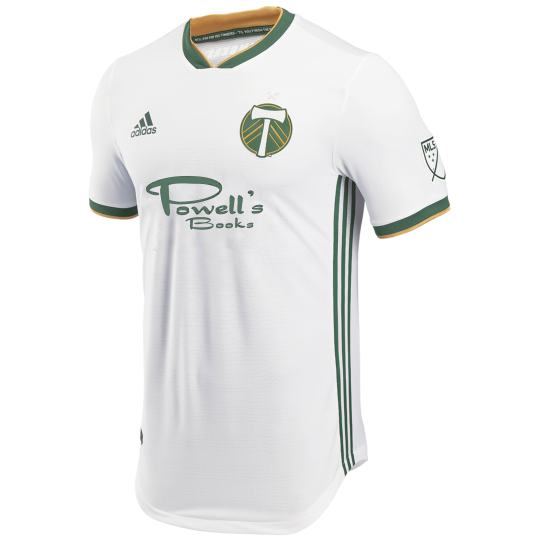
Real Salt Lake — High West
Tucked away in a state known primarily for its gorgeous vistas and as the home of the Mormon religion is a really wonderful distillery that will knock your socks off. It also comes with that beautiful mountain view, not unlike Rio Tinto Stadium.
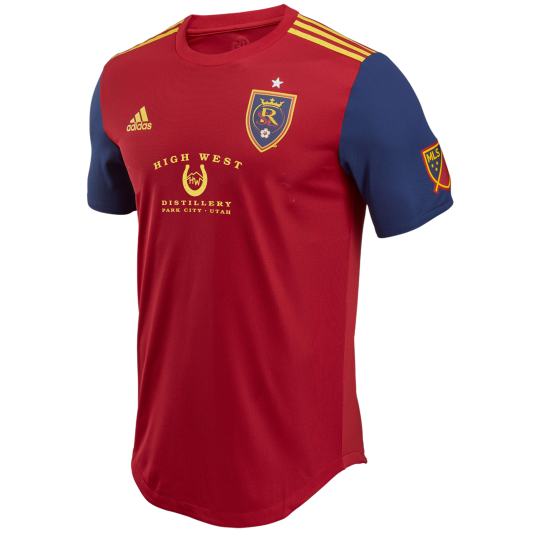
San Jose Earthquakes — Yahoo!
Nothing says cool like needing an exclamation point at the end of your name. Kind of like building a brand new stadium and needing to tell people that you have a really long bar.
As the kit sponsor of the Quakes during their two title runs, we think it’s time for Yahoo! to make a return. (Not sure anyone will use it, though.)

Seattle Sounders — Starbucks
Sorry, we’re those guys. Seattle gave the world Starbucks and we needed to see what that logo would look like on these new kits.
Plus, much like Starbucks invented coffee, the Sounders invented American soccer.

Sporting Kansas City — Hallmark
A proudly Kansas City company that is all about good vibes, with extensive Wizard of Oz involvement over the years.
That sounds a lot like Sporting KC to us—a team that needed a rough start in order to find its way. Much the same, Hallmark probably would have never become what it is today without extensive setbacks in its early years.
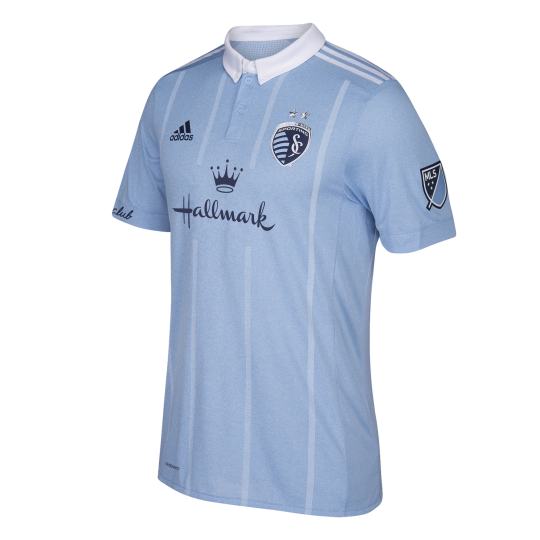
Toronto FC — Tim Hortons
Timbits and trophies: That’s what Toronto does. Nowadays, anyway.
We only had three Canadian teams to give the Tim Hortons love to, so we figured the toast of MLS deserves the world’s most lovely quick-service cafe and bake shop.
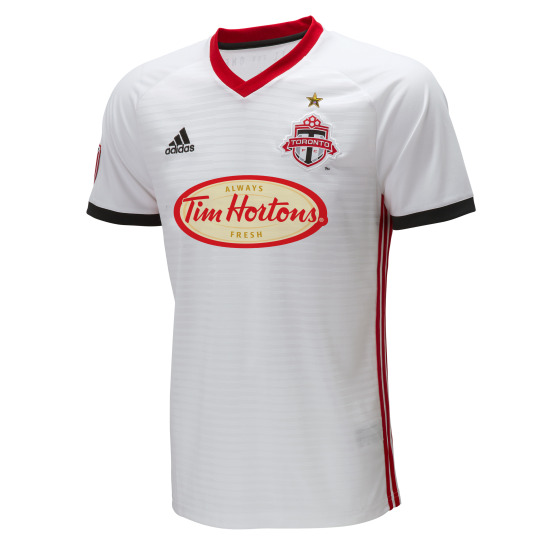
Vancouver Whitecaps — Lululemon
Set on the water, with an amazing mountain view, you couldn’t say a bad word about how great Vancouver looks. It’s straight-up cool. And local company Lululemon makes activewear that looks similarly awesome. We are officially here for MLS yoga wear.

————
This post was a collaboration between Where Is Football and Tap In Guide. Check out their stuff—it’s awesome.
A special thanks to Tap In’s graphic designer Mike Arney for helping bring our ideas to life, and to our buddy Ryan Rosenblatt for developing those ideas with us.
As always, you can follow us on Instagram @whereisfootball.
36 notes
·
View notes
Text
Your search for tiny house kits for sale ends here at TinyHouseMe

TinyHouseMe is the one-stop destination where potential buyers can connect with established tiny home builders under one umbrella. Here, you will witness top-notch tiny house kits for sale manufactured by certified builders. On our platform, you can get in touch with not one but several tiny home builders across the USA and Canada. So, no matter whether you are looking for tiny houses on foundations, ADU units, tiny house kits for sale, or cabins on wheels, sign up on our platform, connect with established builders, and avail of competitive prices.
0 notes
Text
Agilenano - News: Aging in Place: Granny Pods Provide Privacy and Independence
If you’re thinking about how to take care of aging relatives and concerned that you might not be able to provide the level of care you’d like to, you’re not alone: the population of Americans ages 65 and over has seen a 33% increase between 2006 and 2016, according to the latest research. What’s more, the Population Reference Bureau states that the aging of this group deemed “baby boomers” could fuel more than a 50% increase in the number of Americans ages 65 and older requiring nursing home care.
As after-retirement care prices soar, some families are looking for a new solution to offer assistance to their elderly loved ones. If you find yourself in the position to provide such care, one solution is to build an accessory dwelling unit (ADU) on your property.
While these miniature homes have been given the not-so-great nickname of “granny pods,” they are a great way to allow you to care for your relatives while affording them the privacy and independence they deserve.
Let’s shed some light on the granny pod phenomenon, including zoning, costs, and the pros and cons of adding an ADU to your property, to help you decide if this is the right option for you and your family.
Source: (Lupiphoto/ Shutterstock)What is a granny pod?
You may or may not be familiar with the not-so-technical term “granny pod”; The official term used by architects and city planners is accessory dwelling unit, but an ADU is synonymous with granny pod, granny flat, care cottage, in-law suite, and a host of other creative descriptors. These small permanent structures are built on a single-family lot that already has a house on it.
The dwellings are essentially fully functioning mini-homes and include everything one needs to live independently. They often have their own wheelchair-accessible entrance and can be outfitted with as many or as few nursing care safety and technology features as you choose to include. A typical granny pod is between 250 and 900 square feet.
When it comes to adding a granny pod to your property, you have a few options. You can DIY the project and hire a contractor to oversee the build out of an existing shed or garage, you can build a new structure from the ground up, or you can have a prefabricated home delivered to your back doorstep.
Before we get into the particulars of granny pod build outs and the pros and cons of adding one, let’s address a very important point — the legality of adding an ADU to your property.
Are you legally allowed to add a granny pod to your property?
The laws on adding an ADU to your property vary from state to state and even from municipality to municipality. The first thing you should do if you are thinking of adding a granny pod to your property is do some research to see if they are allowed in your area.
We spoke with Rita Shaw, a top-selling Redlands, California, agent with 42 years of experience in the industry, who told us that in 2019, California passed a law “that requires cities to allow people to build second units on their property as affordable housing units.” Shaw just built such a unit on her own property and says buyers are very interested in ADUs for a variety of reasons, including housing family members. (If you live in a state other than California, you’ll need to make sure your area is on board.)
When it comes to determining whether you are legally allowed to add a granny pod to your property, you’ll see a few technical terms that you’ll need to understand before proceeding with construction.
Zoning codes tell you where you are allowed to build a granny pod. Zoning varies greatly between municipalities, and regulations are changing all the time.
Here is a handy source to check if ADUs are approved in your district. If you don’t see your area on the list, you can call your local zoning or planning department. Once you determine that you are indeed zoned to put an ADU on your property, you’ll need to learn about how the construction must proceed.
Building codes tell you how to build your granny pod. These codes focus on public health and safety. They will dictate minimum square footage, fire safety requirements, and more. If you hire a licensed contractor, they will be aware of all of the codes, and they should discuss this with you during the planning phase of your project.
Covenants regulate aesthetic standards in specific neighborhoods. If you live in a new development, covenants may prohibit you from building a granny pod even if zoning and city codes do allow for such construction. Be sure to check with your neighborhood association if you belong to one. In addition, if you are a member of a homeowner’s association, the board will determine if granny pods are allowed.
What’s included in a granny pod?
A granny pod should not be confused with a tiny house. Many tiny houses fall under the recreational vehicle code because they are on wheels and can be moved. If a tiny house has wheels, it is classified as an RV, which makes it a no-go on 99% of residential properties.
A granny pod, on the other hand, is a permanent structure, which is built on a concrete slab and designed to gather its energy, sewer, and water needs from the main house on the property. In some cases, you can modify a tiny house to become a permanent structure on your property with its own energy metering.
The one-story building will generally comprise a living and sleeping space, a kitchen, and a bathroom. The space is designed to ensure the safety of your aging loved ones. These ADUs are equipped with handrails, open floor plans, soft padded flooring, and accessible bathrooms. Some prefab units come complete with smart home adaptability so that you can monitor what is going on inside at all times. You can even set alarms so that the resident is reminded to take medications, turn off appliances, and more.
Source: (Gayatri Malhotra / Unsplash)How much does a granny pod cost?
You can expect to spend at least $40,000 to build the simplest structure and between $100,000 and $250,000 for a prefab model chock full of all the medical features and technologies needed for top-of-the-line care and comfort. There are several companies that have conceived and crafted elder-care cottages.
Each of the following companies has a range of prefabricated granny pods that you can easily and quickly install on your property. Some are only available in certain states, so be sure to check those details. They all offer several floor plan options and amenities to suit your needs.
Better Living Express
Better Living Express provides a project estimator to help you create estimates around different options so you can find the one that works for you.
MEDcottage
MEDcottage is focused on providing medical technology with remote monitoring available so caregivers and family members can have peace of mind. It’s basically a remote hospital room for those who need more medical monitoring and attention.
There are three options:
A Living ROO, designed for a garage buildout A Mother Ship, which sits on an RV platform A MEDcottage Classic, which comes in a do-it-yourself kit you can assemble yourself or hire someone to install. Prices for the MEDcottage Classic range from $85,000 to $125,000.
ElderCottages
Elder Cottages are on the low end, price-wise; they range in price from $44,960 for a one-bedroom, one-bath, 568-square-foot house to $60,440 for a two-bedroom, two-bath, 947-square-foot house. You will still have to pay a contractor to build a foundation, move the cottage onto your property, and hook up the utilities.
If you don’t feel that a prefab unit is right for you, there is always the option to DIY. Many of the companies above offer building plans you can purchase to build the new structure.
If you have an existing outbuilding on your property, it may save you money to convert the structure into a granny pod. The cost of this option varies greatly depending on the area in which you live. The best bet will be to do a Google search for contractors in your area that specialize in ADUs.
No matter which option you choose, there are two other costs you will need to take into account. Shaw shared a great point with us: “You can run utilities, the electric, water, and gas directly from the main house, but the biggest concern is sewer. You need to have your plumber survey the sewer lines to make sure you are going to make the grade.” Many ADUs are built in backyards, while the sewer connects to the street out front, so that’s another consideration — and if you’re on a septic unit, you’ll need to make sure it can handle the addition.
One more cost to take into account is insurance for your new property. Your granny pod may be covered under your current homeowners’ policy under the “other structures” section, but the extent to which your ADU is covered depends on your current insurance policy.
In general, other buildings are covered at 10% of your primary dwelling coverage amount. So, if your primary dwelling is insured to $300,000, then your granny pod will be covered for $30,000. If your granny pod is valued over the 10% number, you will need to increase your ‘other structures’ coverage, which will increase your insurance premium.
Pros to building a granny pod Proximity
You will have your loved one in your own backyard and thus will be able to monitor their health and safety as well as provide companionship while still respecting their autonomy.
Long-term cost
Constructing a granny pod is often less expensive than having your relative live in a nursing home or an assisted living facility. According to Genworth’s Cost of Care Survey, on average in the United States, a private room in a nursing home costs $8,365 per month, or $275 a day.
Property value increase
Your property value could increase with the addition of the ADU, but this depends on several factors. In some areas, ADUs can be rented out separately from the house, and potential buyers could see this as an asset.
The addition of the ADU can add square footage to the resale value of the property. If you have specific questions about your neighborhood, get in touch with a real estate agent in your area.
Cons to building a granny pod Upfront costs
Building a granny pod can cost a lot of money upfront. You may be able to leverage the equity you have in your home to withdraw the money to make the improvement.
Utility bill increases
If you do not install solar energy for your granny pod, the building will be an extension of your home with respect to electric, gas, and water — thus, your utility bills will increase based on the new consumption.
Property tax increases
When you add an ADU to your property, you are increasing the value of your property. Along with this increased value will come a new assessment of your property’s worth. The amount of additional tax will depend on where you live and how the tax percentage is calculated. You can get in touch with your mortgage company to get more information, and decide if the additional taxes will be worth the investment.
Granny pods offer the ability to age in place. Keeping your loved ones close — but not too close — affords them the independence they deserve while providing the safety they may need. This option enables you to provide them with emotional support and social engagement while maintaining your own personal space. If you are considering this option do remember to check in with your municipality first to check on the zoning regulations. Happy building!
Header Image Source: (Jean Carlo Emer / Unsplash)
#What'sOutThere? #Buyers #HouseHunting
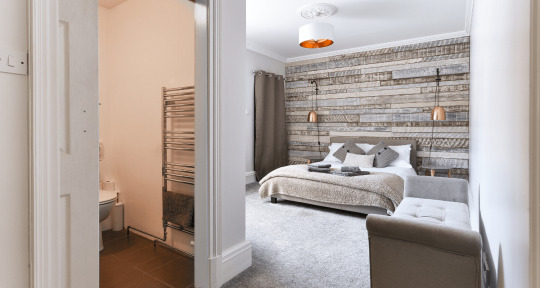
Agilenano - News
from Agilenano from shopsnetwork (4 sites) https://agilenano.com/blogs/news/aging-in-place-granny-pods-provide-privacy-and-independence-1
0 notes
Text
Is coronavirus driving Atlanta tiny home sales?

Could tiny houses be key to social distancing (from the rest of your family)? | PPA/Shutterstock
Forced to remain home, Atlanta is on pace for a 150 percent increase in Accessory Dwelling Units this year
As Atlantans with large families or several roommates continue to adjust to the state’s “shelter in place” order by working from home, they may naturally find themselves longing for the peace and quiet of their regular offices.
As a result, some local homeowners are looking to add to their current space, as permitting data show. But instead of waiting for a time-consuming addition that may carry a high cost, the go-to choice, in some cases, is putting a tiny house in the backyard.
“I think people are just now starting to feel the realities and constraints of working from home,” says Frank Golley, founder of Golley Houses, a Decatur tiny home manufacturer.
“Since working from home will be a reality for many people for the foreseeable future, we expect to see a greater interest in people building an accessory dwelling unit to use as a home office space.”
In addition, Golley also expects an increased interest from families who want to use a tiny house as a homeschool room.

Timothy S. Allen/Shutterstock
Families could install their own one-room schoolhouse in backyards, manufacturers say.
Thus far, there have been seven permits created in Atlanta in the first three months of 2020 for an Accessory Dwelling Unit (ADU), or tiny home, according to Golley.
While that number doesn’t seem like much, consider that a total of 26 AUD permits were filed for in 2019.
“Three permits were created on December 27, 2019, so they are obviously planned for construction in 2020,” Golley says. “Using that shift of information, 10 in the first three months of 2020 and 23 in 2019, there is going to be a significant increase in the number of ADU permits created in 2020: almost a 150 percent increase.”
Of course, just how much space Atlantans can add with a tiny house is limited. Currently, City of Atlanta regulations limit the maximum size of a tiny house to 750 square feet.
One’s ability to install a tiny house also hinges on budget. While some units start in the high four figures, the average is in the low- to mid-five figures. A basic Golley House kit is $17,000, plus an average of $8,000 in finishing costs, Golley says.
“The level of finish and type of foundation would vary the final cost,” Golley says.
The real question for Atlanta homeowners: Is adding a tiny home worth the time and investment if “shelter in place” restrictions are lifted within the next 60 to 90 days? And, if the answer is “yes,” how quickly will the City of Atlanta be able to process and approve a permit?
Once homeowners are able to get out and about again, it could be interesting to see what becomes of any tiny home purchase.
source https://atlanta.curbed.com/2020/4/6/21209232/coronavirus-atlanta-covid-19-tiny-home-sales
0 notes